Building of the Day: 227 Marcy Avenue
Brooklyn, one building at a time. Name: Former Eastern District High School, now Bais Ruchel School for Girls Address: 227 Marcy Avenue Cross Streets: Rodney and Keap Streets Neighborhood: East Williamsburg Year Built: 1907-08 Architectural Style: Romanesque Revival/Collegiate Gothic Architect: C.B.J. Snyder Other Buildings by Architect: Erasmus Hall High School, John Jay High School, PS…
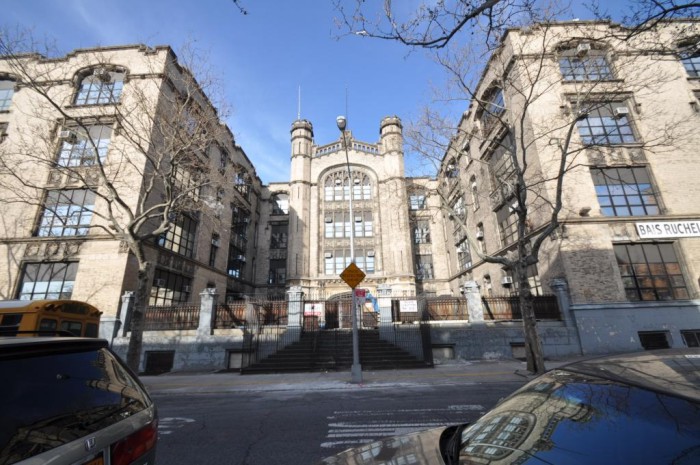

Brooklyn, one building at a time.
Name: Former Eastern District High School, now Bais Ruchel School for Girls
Address: 227 Marcy Avenue
Cross Streets: Rodney and Keap Streets
Neighborhood: East Williamsburg
Year Built: 1907-08
Architectural Style: Romanesque Revival/Collegiate Gothic
Architect: C.B.J. Snyder
Other Buildings by Architect: Erasmus Hall High School, John Jay High School, PS 93, 132, 133, 157 and many others in Brooklyn, as well as elementary, middle, and high schools across New York City.
Landmarked: No
The story: In 1894, State Senators in Albany were fighting on the floor of the State House over whether or not to build a high school for the Eastern District of Brooklyn. Williamsburg was growing by leaps and bounds with thousands of new immigrants crowding the newly built tenements in the district, adding to those who were already there. Most of the new families had children, and local elementary schools were overcrowded. Most of them had already moved students to nearby buildings purchased as annexes. The school system couldn’t build fast enough.
But high school was a bit different. The concept of high school was only about 30 years old, and although educators embraced the idea of high school for every child, many poorer kids never matriculated through high school – the demands of work, to support the family, were often too strong. On this day in Albany, senators were arguing for the creation of a new ED High School, one that would offer not only higher education to ready one for college, but also training that would enable a student to get a good job. One by one, the neighborhoods of the city of New York were getting high schools, and Williamsburg wanted one too.
The fight was being led by Senator Owens, of the Eastern District, a fierce advocate for his constituents. But astonishingly, when he met with Mayor Charles Schieren, who would be the next to the last mayor of the independent City of Brooklyn, the mayor shot him down. He thought more schools were needed in the district, or the existing schools enlarged, but he didn’t see the need for a high school.
Fortunately, the next administration was more amenable, and a location was sought for the new school. Then, in 1898, Brooklyn became a part of Greater NYC, and the Brooklyn Board of Education was absorbed into the New York City Board of Ed. If a new high school was to be built, it would be coming from the office of the Superintendent of School Building of the Board of Education of the City of New York.
That office was in the good hands of C.B.J. Snyder, New York City’s greatest school architect and engineer. The first Eastern District High School was the old Eastern District Library, which was going to be converted into a school, with the addition of a new wing. A new school would be built, but in the meantime, this would have to do. Snyder had about 20 different new school buildings on his plate at this time, all across the city.
The new EDHS was supposed to open in September of 1899. They were, of course, way behind schedule. They opened in February of 1900. Amazingly, there were only four other high schools in the entire borough of Brooklyn, at that time. From the moment the school opened, Snyder knew he needed to build a new, much larger school. The new school already had 188 pupils, with more wanting to enroll. The story of the school getting off the ground is actually pretty interesting and worthy of writing about later in a Walkabout piece. There was intrigue, politicking, and blunders a-plenty.
At long last, in 1908, the brand new Eastern District High School opened with much pomp and ado. Snyder designed one of his famous “H” school buildings here, the shape allowing for large windows and light and ventilation all throughout the building, on all sides. The school is in the Collegiate Gothic style that he loved, although nowhere as ornate as his Erasmus Hall High School building. The enrollment soon swelled, proving once and for all, that former Mayor Schieren was very wrong.
Over the years, many famous names came out of this school. Graduates include Red Auerbach, NBA Hall of Fame basketball coach, as well as writer Henry Miller, theater producer and director Joseph Papp, comic genius Mel Brooks, class of ’44, and singer Barry Manilow, class of ’64.
Like many NYC schools, the Eastern District High School fell on bad times by the 1960s and 70s. It was failing miserably on all of the usual fronts. The Board of Ed changed principals, and instituted many programs to fix it. But none were successful enough to keep the school open, and it closed in 1981. The school now belongs to the Satmar community and is home to the Bais Ruchel School for Girls.
GMAP
(Photo:Christopher Bride for Property Shark)
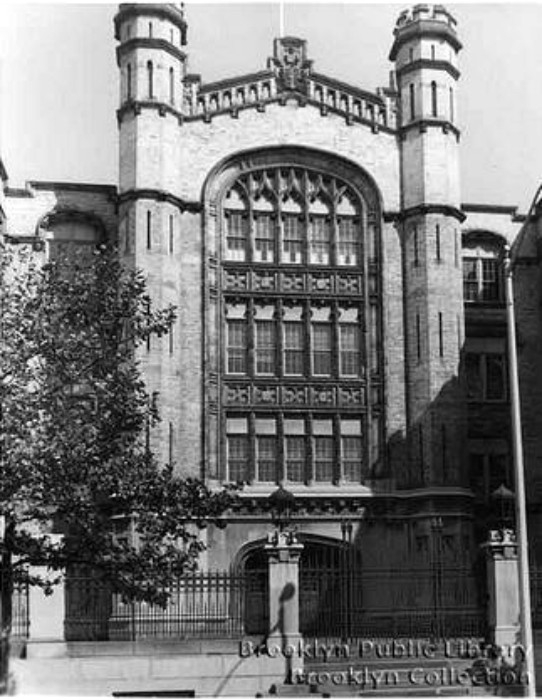
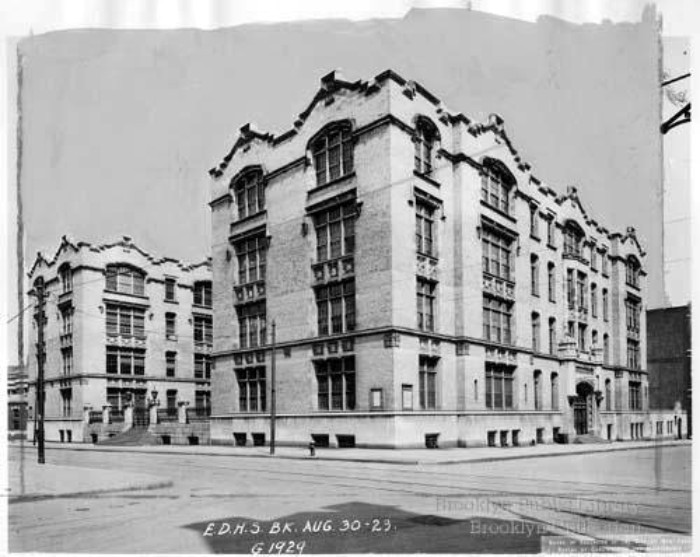
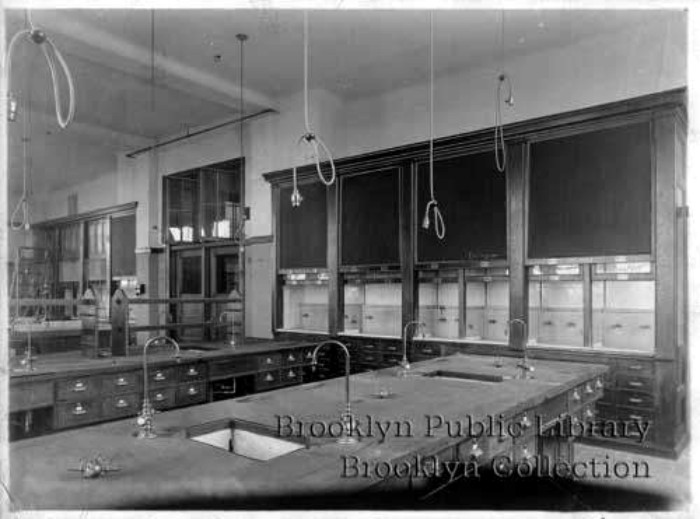
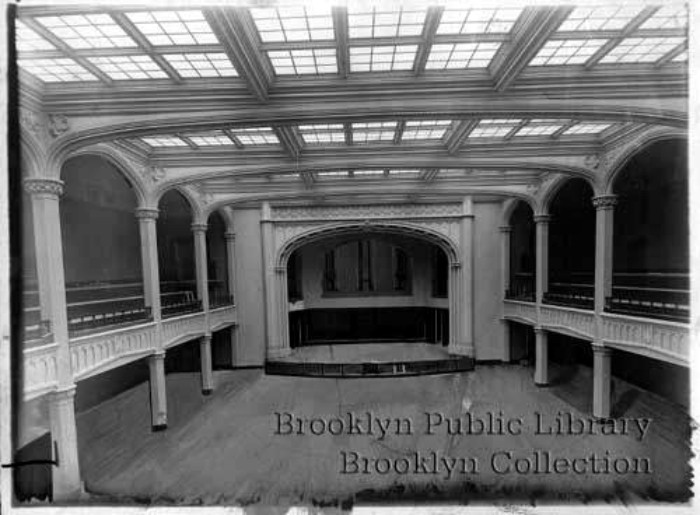
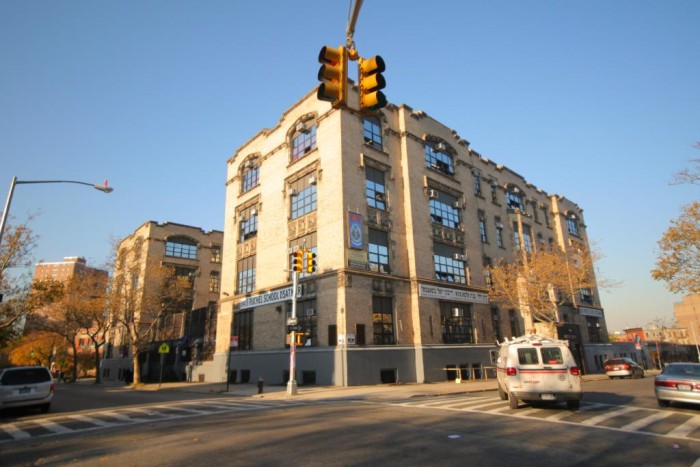





While Eastern District had become, by the 1970’s, a troubled school, the closure of this building did not result in the demise of this institution. Instead, Eastern District moved to its new location at the corner of Grand Street and Bushwick Avenue at this time. (While a number of alternate names were submitted to a group of students, teachers and parents, apparently they voted to retain the old title – eventhough most of them probably had litle idea of what the old name reporsented.) Unfortunately, the new Eastern District remained a troubled school – and probably got worse. Within the last decade, the large high school ceased to exist and was replaced by a number of smaller schools called the Grand Street Campus. Hopefully things are improving here.
By the way, a portion of the new Eastern District site was once occupied by the old St. Catherine’s Hospital, a most notable historic institution. Also, the fact that it could be constructed at all was quite a significant accomplishment, since this occurred during the 1970’s, when the city’s Capital budget nearly did not exist.